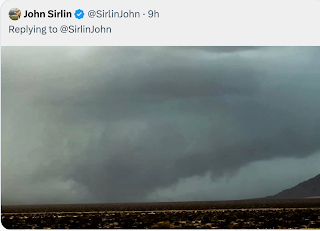Warnings in Motion: A Provocative Idea From the National Weather Service
The National Weather Service and the National Severe Storms Laboratory, for about the last five years, have working on a new concept for tornado warnings. In it, they want tornado warnings "in motion." It is explained by the video above.
There are upsides and a number of challenges with this concept:
There are upsides and a number of challenges with this concept:
- They talk about thirty-minute warnings even though all of the research says 13 to 15-minute "lead times" (the interval from when the warning is issued to when the storm arrives) are ideal. If that is the case, why does the NWS want to do this? Just because they can doesn't mean they should. People will only stay in the basement, closet or bathtub for so long.
- This can only be done with computers. What happens if there is a computer failure? I also worry it takes the human forecaster too much out of the loop.
- Current tornado warnings are, in general, less accurate than a decade ago. Why does the NWS wish to do this when they could be spending the effort on fixing the existing issues?
- How are we going to update tornado warnings at one-minute intervals when National Weather Service radars take a minimum of 1.7 minutes (usually more) to observe tornadoes?
- They talk about considering the needs of businesses. The job of the NWS is to warn the public-at-large. If businesses want special tornado warnings they should get them from private sector weather companies.
- Finally, to do this with any degree of quality and consistency, we are going to need at least 20 gap-filler radars around the nation. This has been evident for at least two decades and I don't understand why the NWS has not been pressing for the infrastructure needed to improve these warnings (as well as warnings of flash floods and severe thunderstorms).
- Since these will be highly computerized, there will be times when City A is in a tornado warning one minute, out of it the next minute, then back in it one minute later. This will cause havoc to warning understanding and credibility.
To be clear: A lot of good thought and effort has gone into the "warnings in motion" concept and there is value in it. From that concept, I would recommend the NWS do more outreach (especially to broadcast meteorologists and private-sector meteorologists) before making final changes to the tornado warning program.
My recommendations? The tornado warning system can and should be improved. I would,
- Fix the known accuracy issues.
- Get more radars!
- In areas without a Terminal Doppler Weather Radar, allow the NWS's WSR-88D's to update every one minute (except for the tenth minute, then a low level volume scan can be done).
- Issue tornado warnings for no more than 20 minutes into the future and update them every ten minutes.
Tomorrow is the 150th anniversary of the NWS. It is good to know they are thinking about the future.




Comments
Post a Comment